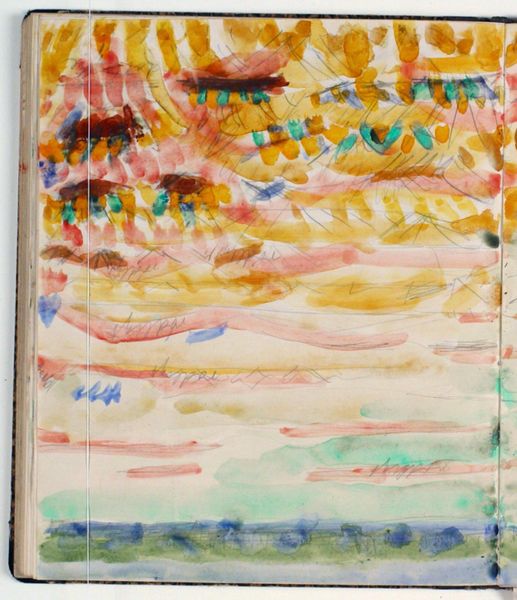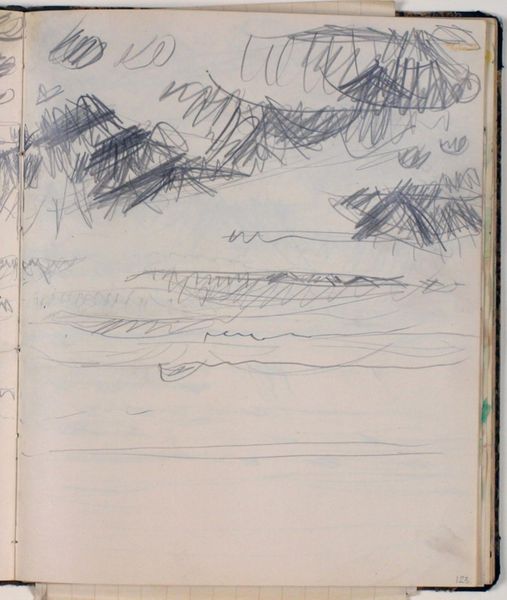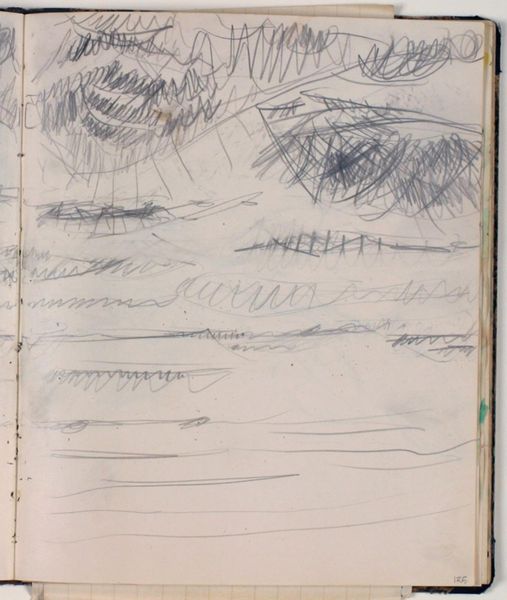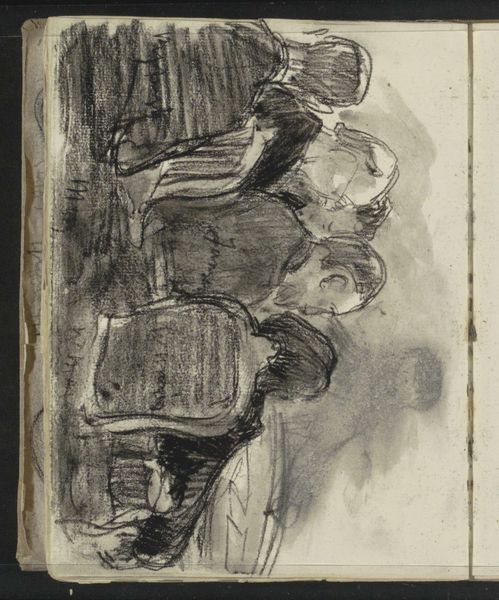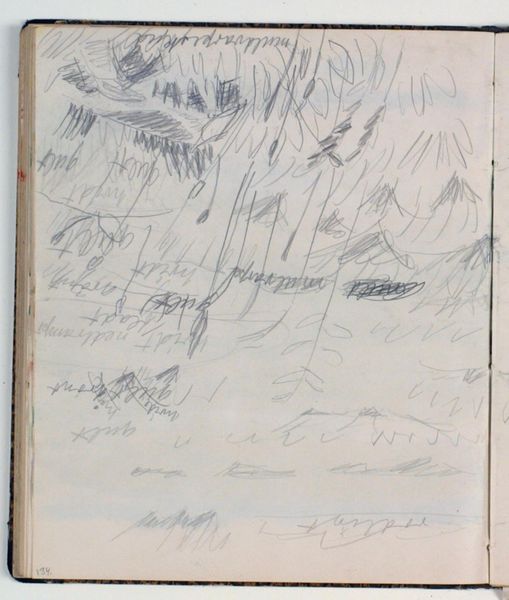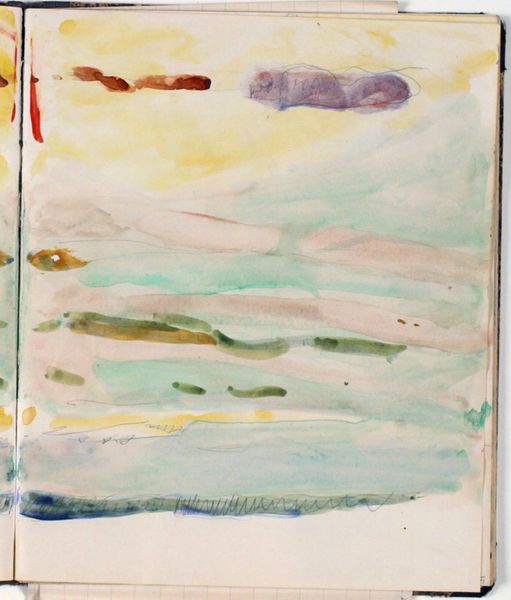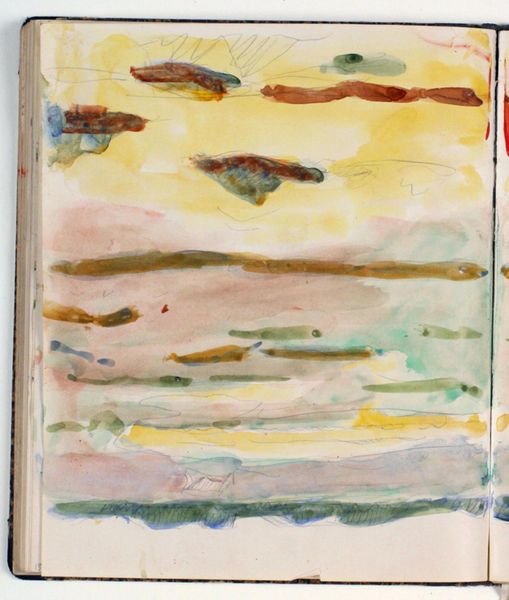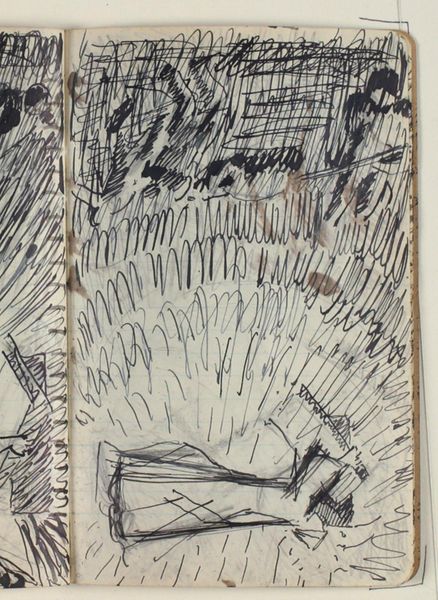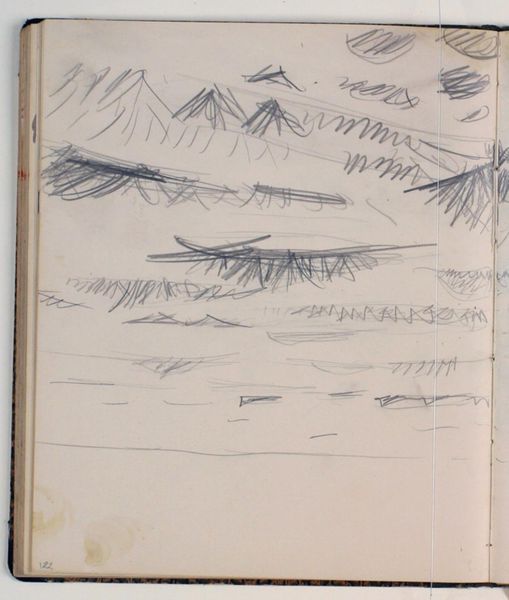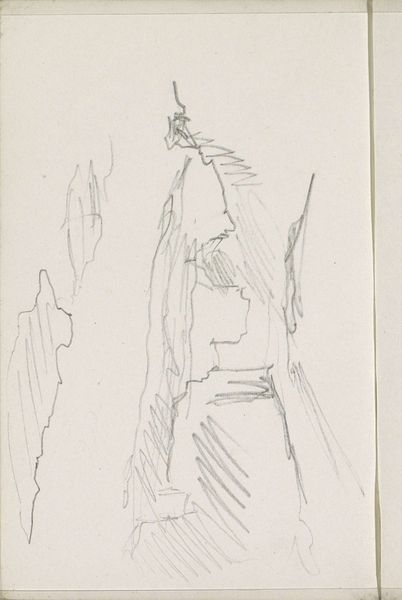
drawing, paper, watercolor, pencil
#
drawing
#
organic
#
water colours
#
landscape
#
paper
#
watercolor
#
pencil
Dimensions: 226 mm (height) x 185 mm (width) x 112 mm (depth) (monteringsmaal), 221 mm (height) x 184 mm (width) (bladmaal)
Editor: Here we have Niels Larsen Stevns' "Studie af buskads", a study of shrubbery created with watercolor and pencil on paper between 1930 and 1936. There’s a real fluidity and spontaneity to the brushstrokes; the colors bleed together, creating this really captivating, almost dreamlike landscape. What do you see in this piece? Curator: It's interesting that you call it dreamlike. When I look at this work, I think about the role of landscape in Danish national identity during this period. Artists often turned to nature as a way to negotiate a sense of belonging. How do you see this drawing fitting into discussions around land and ownership, particularly during a time of immense social change? Editor: That's a perspective I hadn't considered! I was just drawn to the sort of impressionistic feel, but I see what you mean. Is it possible the artist was also grappling with changing notions of masculinity, moving away from traditional representations of strength? Curator: Precisely! We often see these kinds of landscapes as separate from social issues, but Stevns was working during a time when gender roles, class structures, and the relationship to the land were being heavily debated. Does the lack of traditionally "masculine" features, like defined boundaries or clear ownership, perhaps signal a questioning of dominant power structures? Editor: Absolutely, I can see that now. It seems so obvious, but it’s easy to get lost in the technique and miss those deeper social implications. Curator: The beauty of art history lies in that intersectionality, in challenging ourselves to look beyond the surface and recognize art as a reflection of broader power dynamics. By exploring these connections, we can unpack so much about the cultural climate that influenced the work and still influences how we view it today. Editor: I’ll definitely keep that in mind as I continue to study art! Thanks for broadening my view. Curator: It’s been a pleasure! Remember, art is always in conversation with its context.
Comments
No comments
Be the first to comment and join the conversation on the ultimate creative platform.

